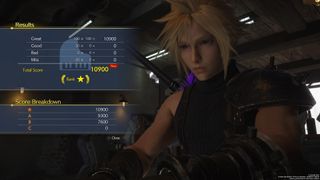The Queen's Blood card game is Final Fantasy 7 Rebirth's best addition and the RPG's greatest distraction
Opinion | Defeating challengers and rising through the Queen's Blood ranks is as enjoyable as it is satisfying
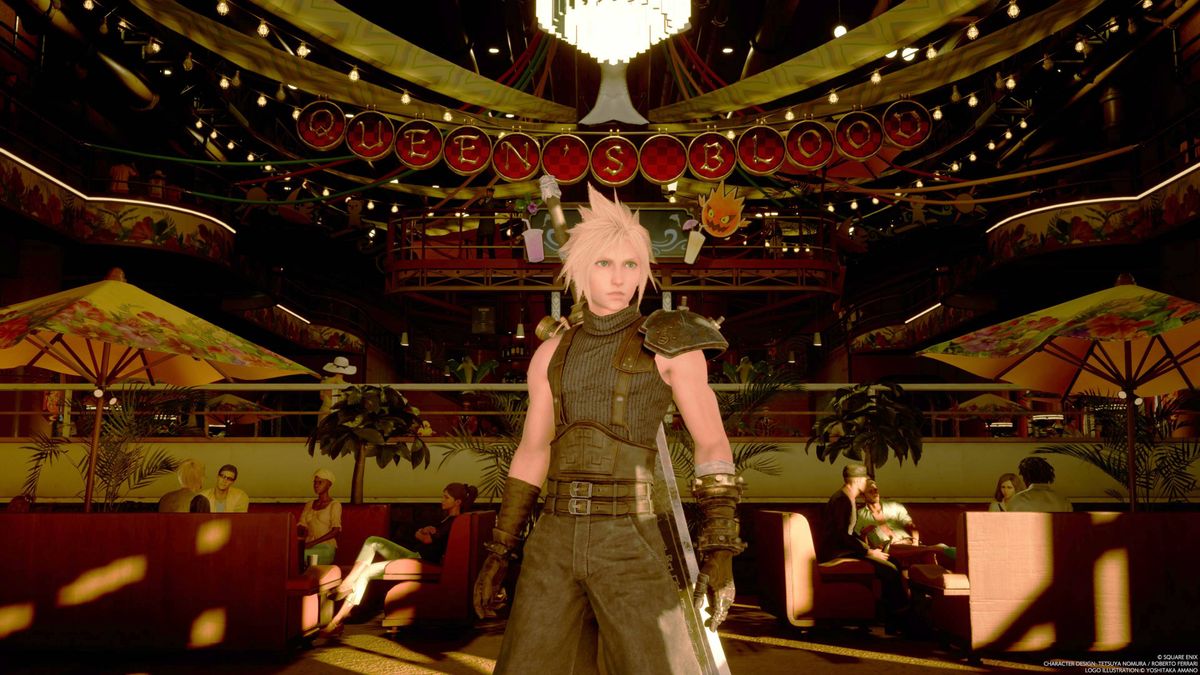
I've lost count of the amount of times I've played the Queen's Blood card game in Final Fantasy 7 Rebirth. After many, many matches, I still can't get enough, which says a lot about how enjoyable it is all on its own. Chances are, if I'm not playing the piano or exploring the world, I'm spending my time trying to beat another opponent in a round of cards. If ever I come across a new Queen's Blood challenger, I need to stop whatever it is I'm doing to settle down for another match. I've always been a big fan of mini-games that get creative with the established features or elements of the fictional setting they're playable in. Not unlike Gwent in The Witcher 3, Orlog in Assassin's Creed Valhalla, or Triple Triad in Final Fantasy 8, Queen's Blood is a brilliantly realized mini-game that fits right into the world of Final Fantasy 7.
My love for the game not only speaks to how well crafted and conceptualized it is, but just how effectively Rebirth introduces it to you, and then continually encourages you to keep playing. I'd go as far as to say Queen's Blood is the best new addition in Square Enix's follow-up, and I already wish it was a game I could play in real life.
Placing pawns
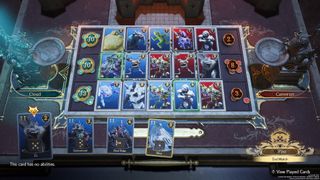
Queen's Blood is one of the first mini-games you get to try out in Final Fantasy 7 Rebirth, and it's woven into Odd Job side quests and the various regions you visit throughout the RPG. With a practice round initially to teach you the ropes, it's not long before you can take on other players in the town of Kalm. Just like Gwent in the Witcher 3, you'll earn yourself new cards with every victory, and also rise up through the ranks to take on tougher opponents if you put in the effort to play. While this incentivizes every match, there's even an overarching story thread attached to the mini-game that I was surprised to discover as I kept on playing more and more.
Fortunately, I don't even need incentives to get me to keep coming back to it – it's just that fun. Essentially, it plays out on a checkerboard not unlike a chess set, which is made up of three lanes. Every card has a different power value and rank, as shown by a number and how many pawns are on the top left and right corners of the card respectively. The rank of a card determines where it can be set down on the board, and the power value of the card will get added to the score of the lane it's placed in. If your score is higher than the opponents when no more cards can be placed by either player, the lane's value will go towards your overall score. But that's not all. Certain cards can also have particular abilities that can change the tide of a match if you get tactical with them.
If that description sounds a bit convoluted, you'll be glad to know it's actually pretty easy to get the hang of in-game thanks to Rebirth's tutorials. Plus, you'll have ample opportunities to keep trying it out early on, which really helped my confidence grow quite quickly – with matches in Kalm and a very sweet Odd Job side quest that will let you put your growing deck to use. It gets increasingly tricky later on as other players lay down their own impressive deck builds, but the challenge and strategy of the excellently crafted card game just makes it that much more enjoyable.
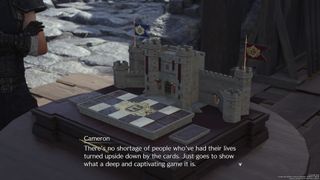
I was absolutely obsessed with Gwent when I first joined Geralt of Rivia for his latest adventure in 2015, and Queen's Blood has sunk its card-shaped claws into me in much the same way. With cards that feature characters and enemies that you encounter out in the world at large, winning a new card and trying it out in another match is always pretty exciting. From ones that can destroy opposing cards to those that increase the value of adjacent cards on your own side, the more you have in your deck, the more you can play around and try out new tactics. And just like Gwent, there's even a tournament to test our mettle against other Queen's Blood players consecutively. When I actually reached the chapter with the tournament, I had many matches behind me, and I was actually very excited to use my new found skills to conquer a greater challenge.
Of course, Queen's Blood isn't the first memorable card game to feature in the Final Fantasy series. Triple Triad came earlier, which was created for the original Final Fantasy 8 release – it even later got an updated refresh to appear in Final Fantasy 14. But as one of the constant highlights of my time in the latest game, Queen's Blood is easily the best new addition introduced in Final Fantasy 7 Rebirth, and writing about it has only reawakened my itch to go back and play it. Better go find another opponent to take on.
Sign up to the 12DOVE Newsletter
Weekly digests, tales from the communities you love, and more
Final Fantasy 7 Rebirth is at its best when it embraces its goofy side.

I started out writing for the games section of a student-run website as an undergrad, and continued to write about games in my free time during retail and temp jobs for a number of years. Eventually, I earned an MA in magazine journalism at Cardiff University, and soon after got my first official role in the industry as a content editor for Stuff magazine. After writing about all things tech and games-related, I then did a brief stint as a freelancer before I landed my role as a staff writer here at 12DOVE. Now I get to write features, previews, and reviews, and when I'm not doing that, you can usually find me lost in any one of the Dragon Age or Mass Effect games, tucking into another delightful indie, or drinking far too much tea for my own good.
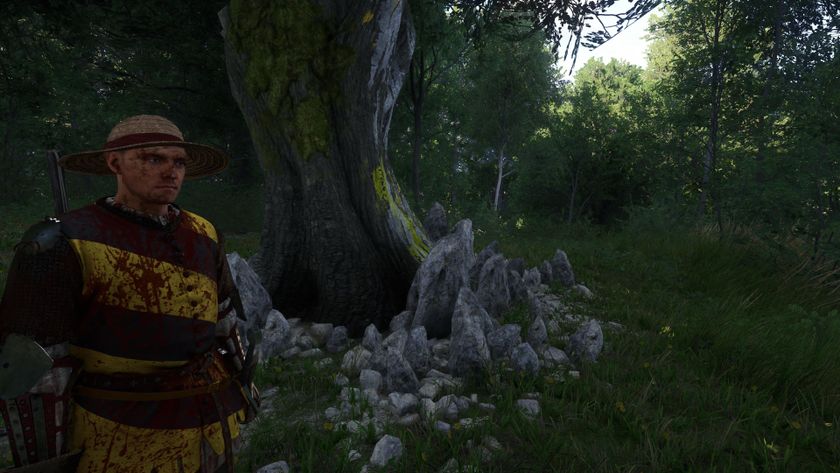
Kingdom Come: Deliverance 2 has turned me into a Bohemian Batman who murders bandits in their sleep, and it's all because of some dead sheep
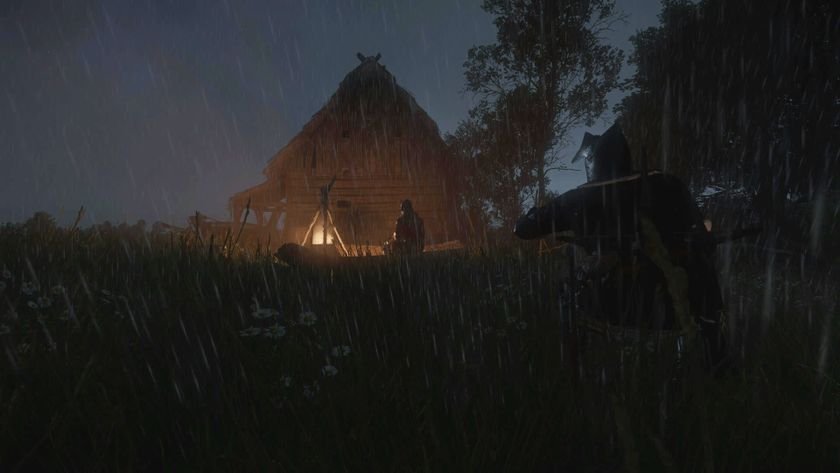
Kingdom Come: Deliverance 2 devs chased down a 600-year-old star map for the sake of historical accuracy and immersion, and it should "be useful for Hardcore Mode"
Most Popular



